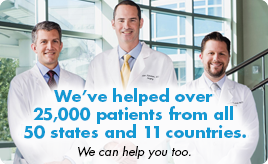Breast reconstruction using abdominal tissue can be an effective way to naturally rebuild the shape of your breast after surgery to remove cancer, but it also can put you at risk for developing a hernia or bulge. An abdominal tissue flap procedure, also known as autologous tissue reconstruction, uses the patient’s own skin, fatty tissue, and sometimes muscle, along with its blood supply from the abdomen and transfers it to the chest to create a new breast. There are various types of autologous flap procedures, but tissue for reconstructing your breast most often comes from your abdomen, such as in a TRAM (transverse rectus abdominis muscle) flap, a DIEP (deep inferior epigastric perforator) flap, and a SIEA (superficial inferior epigastric artery) flap.
TRAM flaps are the most commonly performed type of flap reconstruction, but they are also the most high-risk for developing a bulge or hernia because these procedures take all or part of the underlying rectus abdominus (your “six-pack” muscle) along with skin and fat to reconstruct the breast. The DIEP and SIEA flap procedures spare the muscle completely which helps preserve core strength and minimize risk of a bulge or hernia, however, if you compromise the nerves that power the muscle, it can become paralyzed and lose strength. This makes the abdominal wall weaker and more prone to a hernia or bulge. A hernia can be painful and cause chronic problems.
If a hernia does occur as a result from a flap procedure, we can help. We specialize in hernia repair and abdominal wall reconstruction. During the procedure we will replace any herniated organs within the abdominal cavity, close the hernia and reinforce the area to make it strong. We partner with a plastic surgeon and a body contouring procedure can be combined and performed during the hernia repair. Any further remaining excess skin is removed, and the muscles are reconstructed and tightened, improving the shape and strength of the underlying support tissue. This creates the tighter, smoother appearance of the abdomen, pelvis, and core.
Most patients will plan to spend at least one night in the hospital. Many people are able to work from home within three to four days after surgery, and patients typically return to work within two weeks. Hernia repair and abdominal wall reconstruction after breast cancer is typically covered by insurance.
Hernias can occur due
to a variety of reasons. In the video below, Dr. Thomas Roshek, Abdominal
Surgeon with the Nicholson Clinic and Dr. Matthew Trovato, Plastic Surgeon with
Dallas Plastic Surgery Institute, discuss hernias in general, and explain
hernia repair and abdominoplasty after breast cancer removal and reconstruction.












